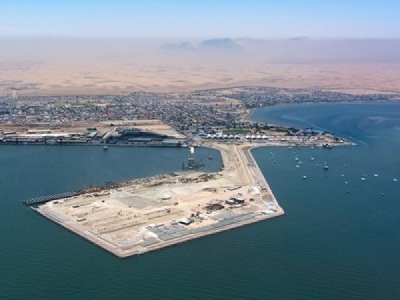
Posted on March 29, 2018
By Chen Qingqing, Global Times
Facing sluggish economic growth, Namibia, a sparsely populated country in southwest Africa, is seeking more cooperation with China during the state visit of its President Hage G. Geingob to the world’s second-largest economy.
China has been supporting Namibia in several domains for years and Geingob’s visit happens at a very critical time as the African country faces challenges like unemployment, Alfredo Hengari, Geingob’s press secretary, said in an interview with Namibian Broadcasting Corp (NBC) on Sunday.
Geingob will visit China from Wednesday to April 3 at the invitation of Chinese President Xi Jinping, the Xinhua News Agency reported on Tuesday.
Bilateral trade increased by 20 percent to $532 million in the first half of 2017, Economic and Commercial Counselor of the Chinese Embassy in Namibia Liu Huabo was quoted as saying in local media reports in October 2017.
Chinese companies have been investing in several sectors in Namibia in the past few years, including energy, mining and infrastructure.
China Harbour Engineering Co (CHEC), a subsidiary of State-owned China Communications Construction Co, has two projects in Namibia – the Port of Walvis Bay Expansion Program and the National Oil Storage Project – with total investment of $800 million, Feng Yuanfei, general manager of CHEC’s Namibia bureau, told the Global Times on Tuesday.
“Those two projects will be completed at the end of this year or at the beginning of next year,” he said, noting that the company has hired about 600 Namibians and contribute to local employment.
Besides CHEC, China General Nuclear Power Corp (CGN) has since 2013 been investing in Namibia Husab mine, which is to be developed as a world-class uranium mine, according to the website of CGN.
The Husab mine’s uranium reserves rank third in the world.
Tencent Holdings has also selected the African country as a place for the QQ X Project, a move to inspire young people exploring landforms, geomorphology, and species that constitute Earth’s southernmost continent, Tencent said in a statement sent to the Global Times on Tuesday.
“The Namib-Naukluft National Park has beautiful landscapes and skies, and it’s the best place for capturing images of starry skies in the southernmost continent,” the company said.
Tencent livestreamed those images to 700 million Chinese users of its platform in 2017, leading a rise in tourism to the African country.
Namibia has become one of the most favored travel destinations in Africa for Chinese people following Kenya and South Africa, domestic news site cnr.cn reported in September 2017.
Hengari said in the interview that Namibia has much to learn from China such as poverty alleviation, infrastructure development, technology and innovation.
“The Namibian government has been focusing a lot on improving living standards with projects such as massive housing developments for low- and middle-income people, food warehouses and desalting plants,” Feng from CHEC said.
Meanwhile, it encourages more cooperation between the private and public sectors in those projects, in which Chinese companies are likely to play more active roles, he noted.
Geingob signed into law the long-awaited Public-Private Partnership Act in June 2017, with the aim of increasing private-sector involvement in the provision of public services, according to a report by NBC.
“Although Namibia is not a country along the routes of the China-proposed Belt and Road (B&R) initiative, the country still expects to take part in the initiative to boost its GDP growth,” Feng said.
Namibia’s Ambassador to China Elia Kaiyamo was quoted in a report by Xinhua in mid-March saying that Namibia hopes that the B&R initiative could be extended into the country, which can then “catch this fast train.”
The Namibian president will be accompanied by a delegation of more than 60 executives from the fishing, mining, manufacturing, civil engineering, information technology and tourism sectors, according to media reports.
Namibia’s economy contracted in 2017 by 0.4 percent but is expected to recover and expand by 1.2 percent in 2018, Reuters reported in March 2017.
Source: Global Times





